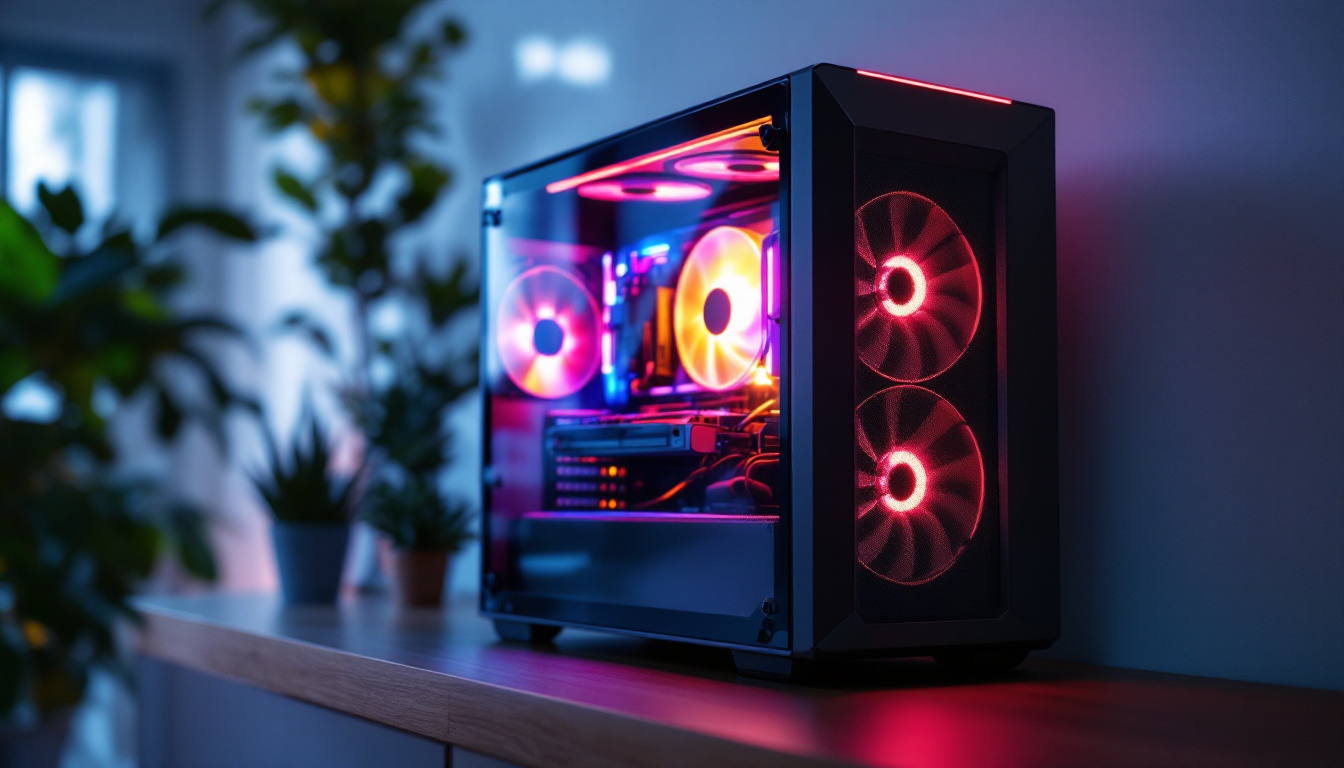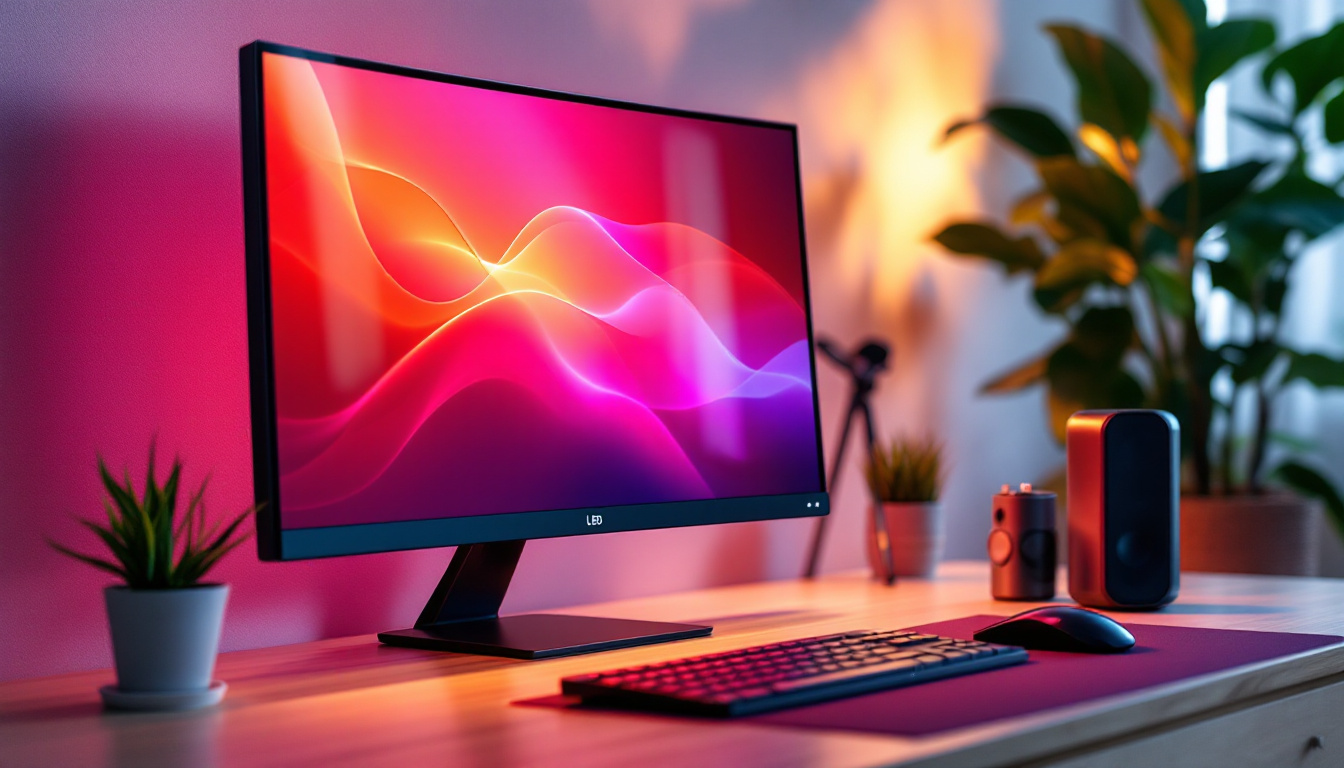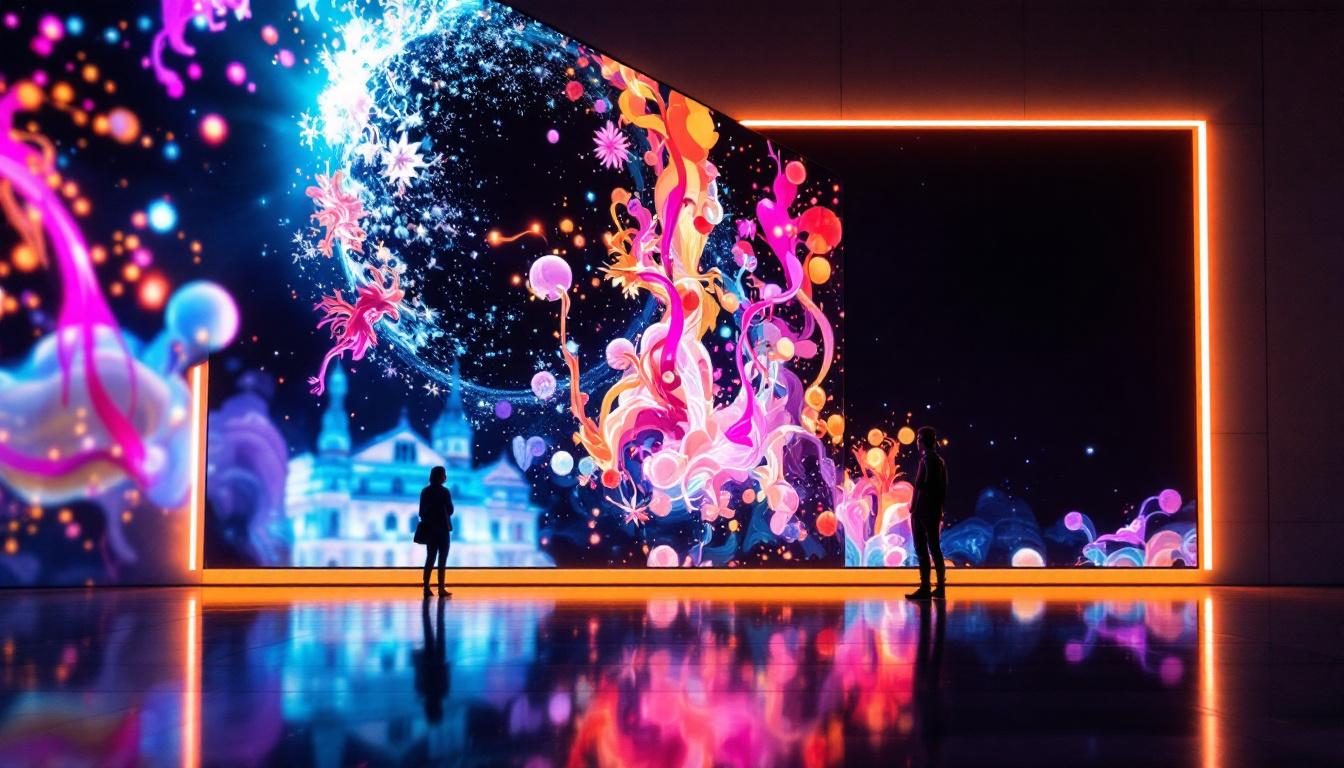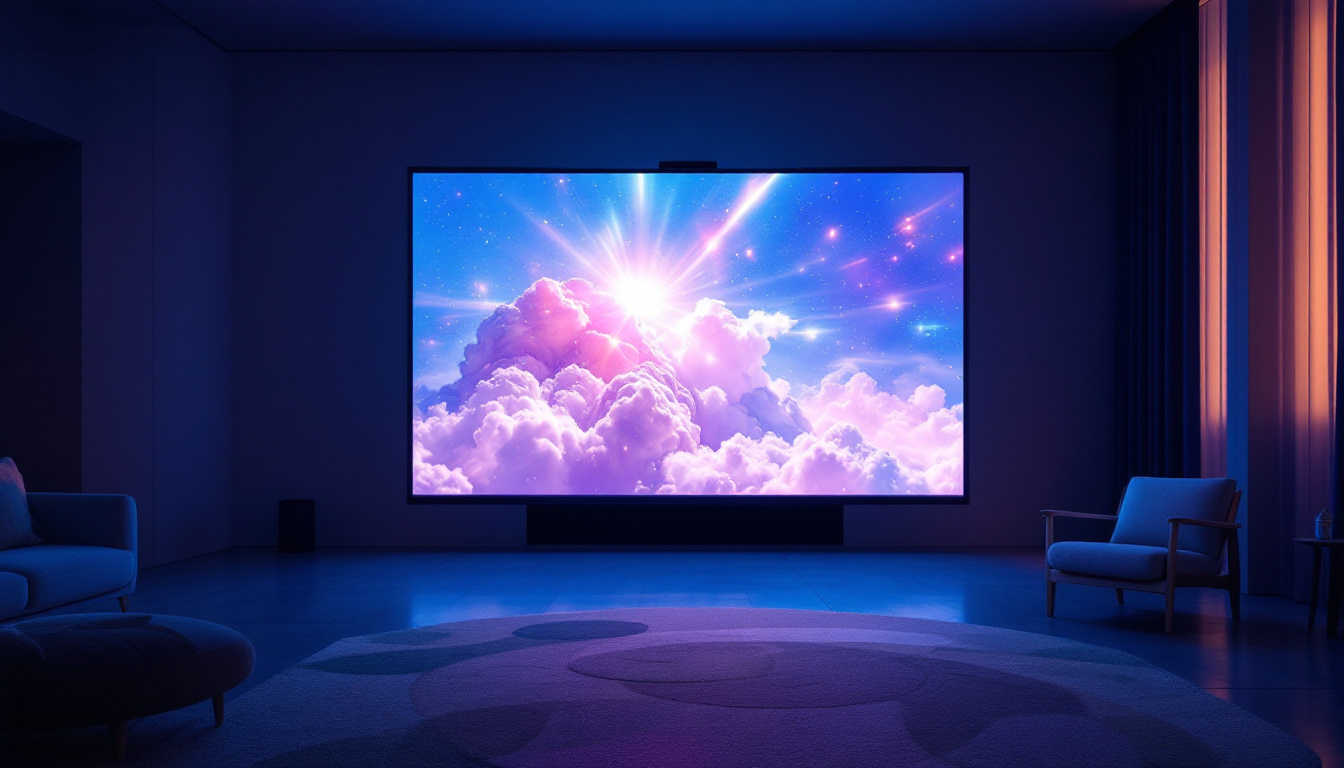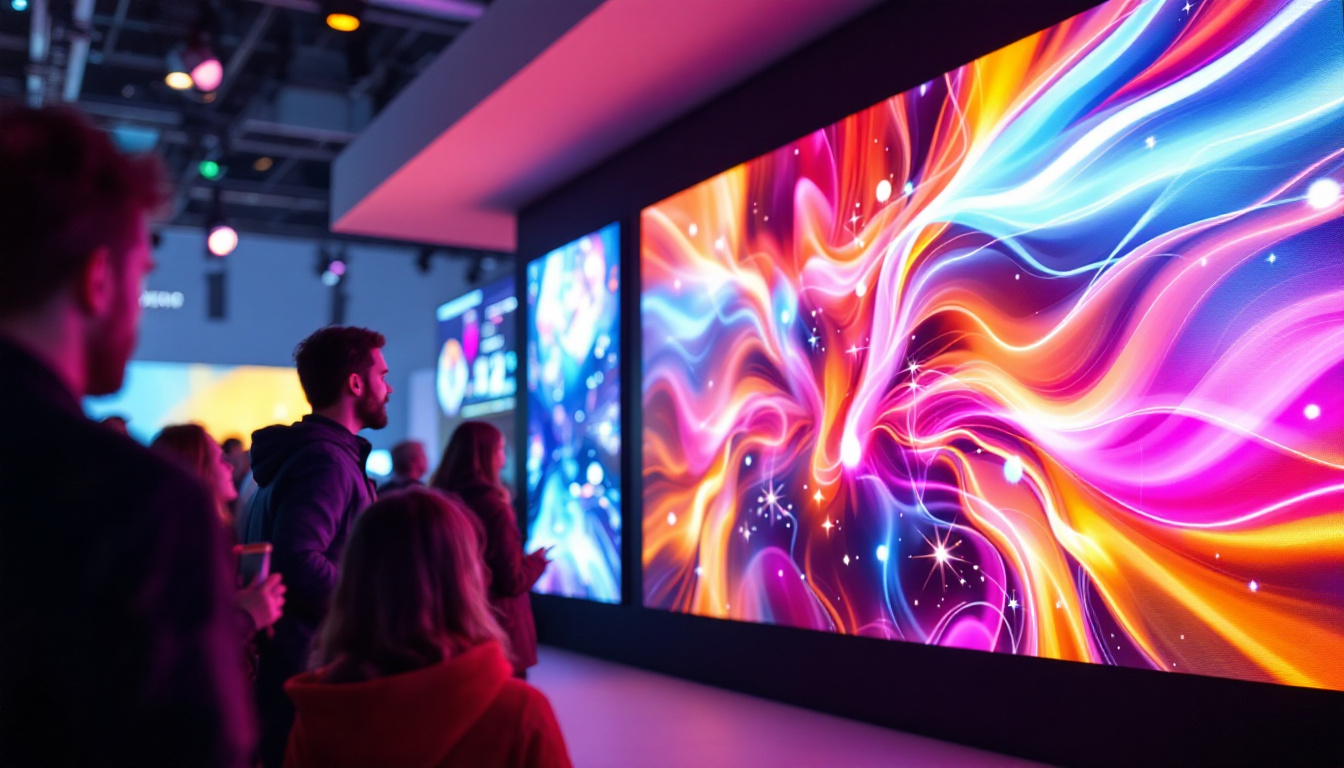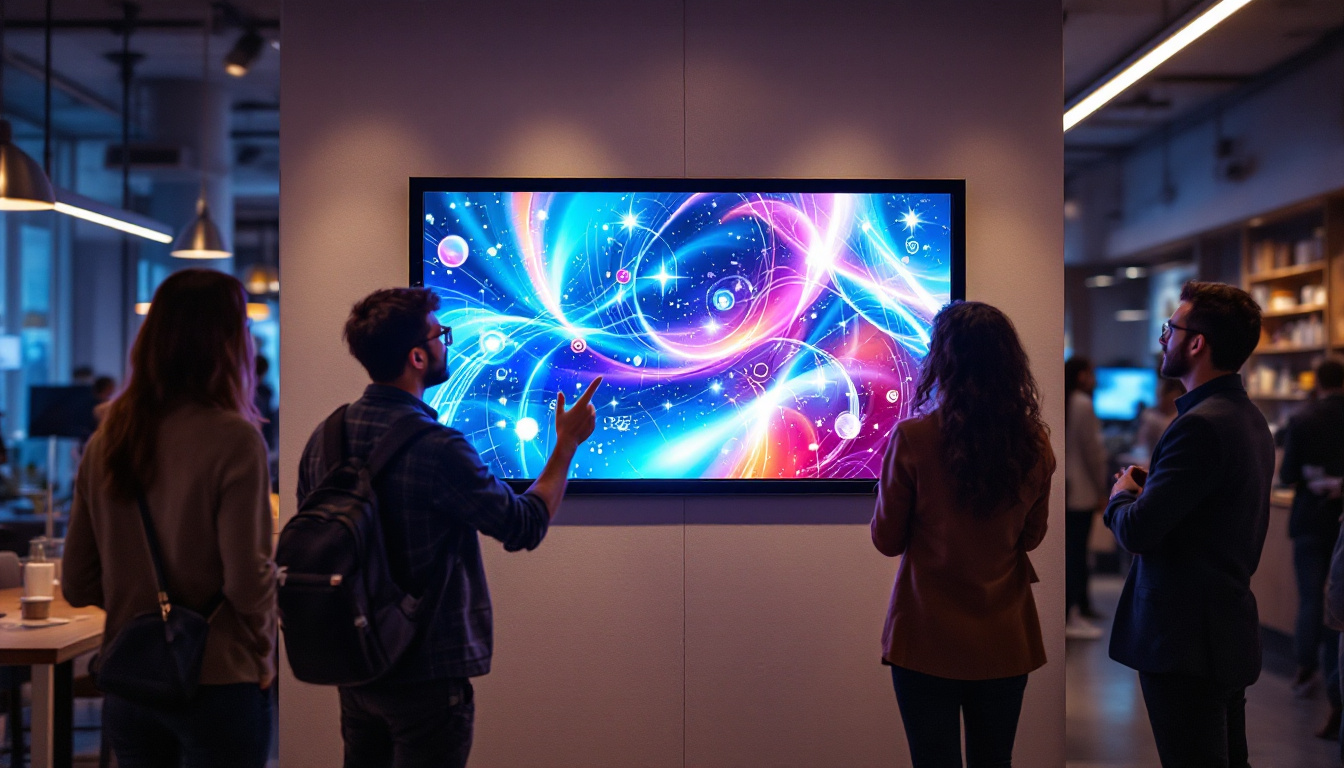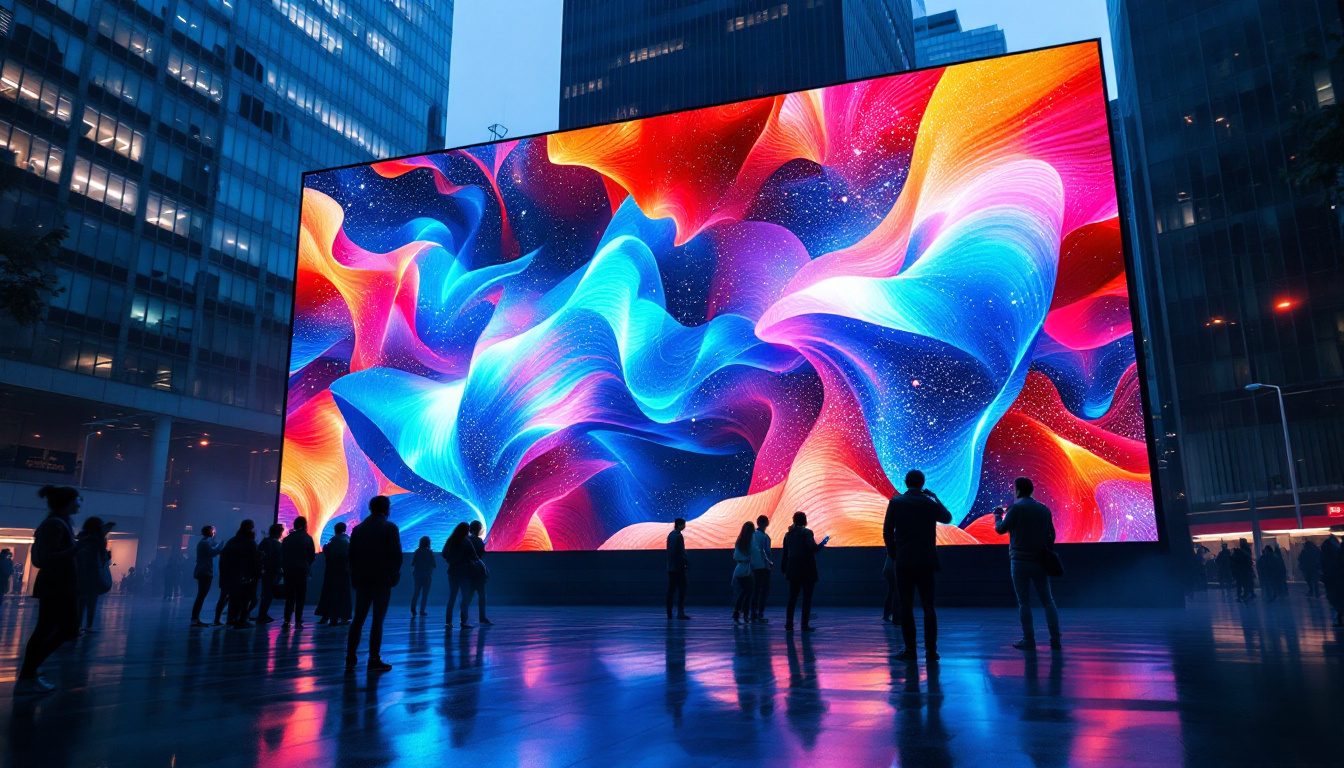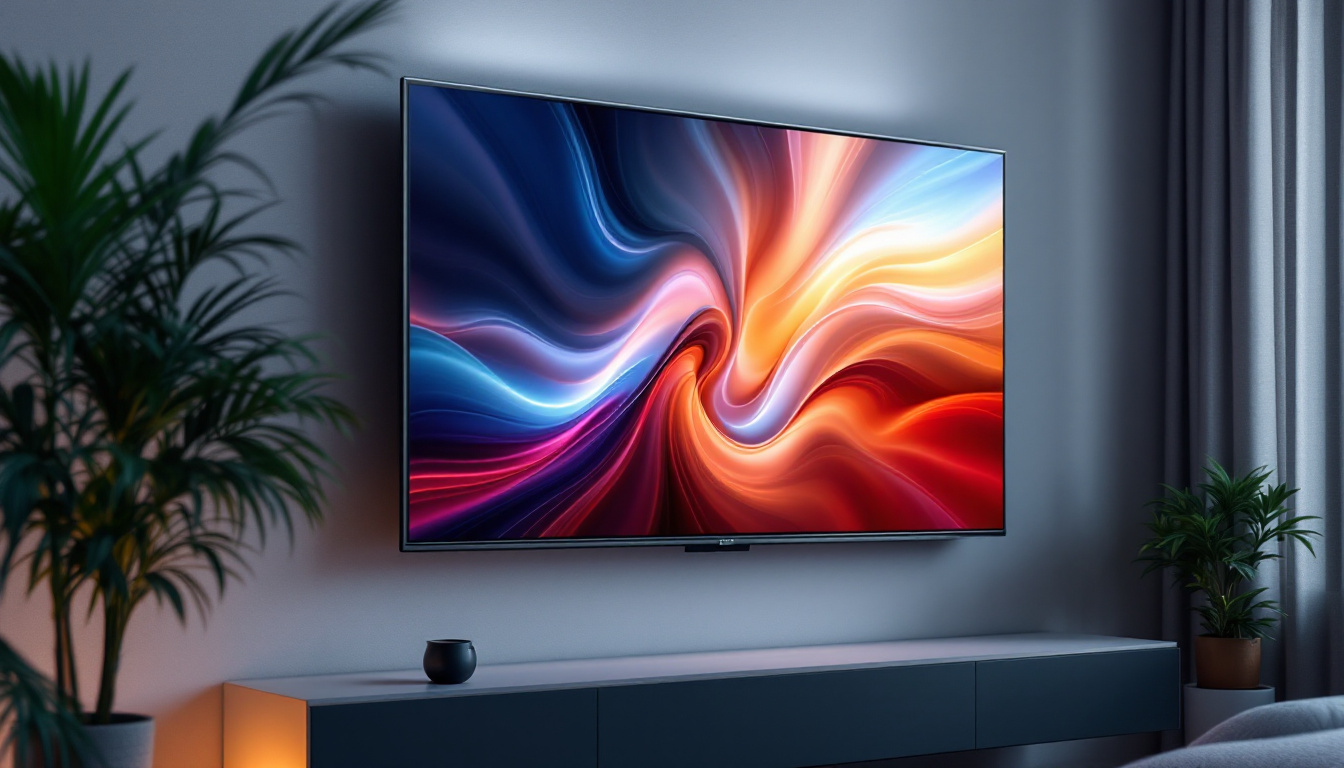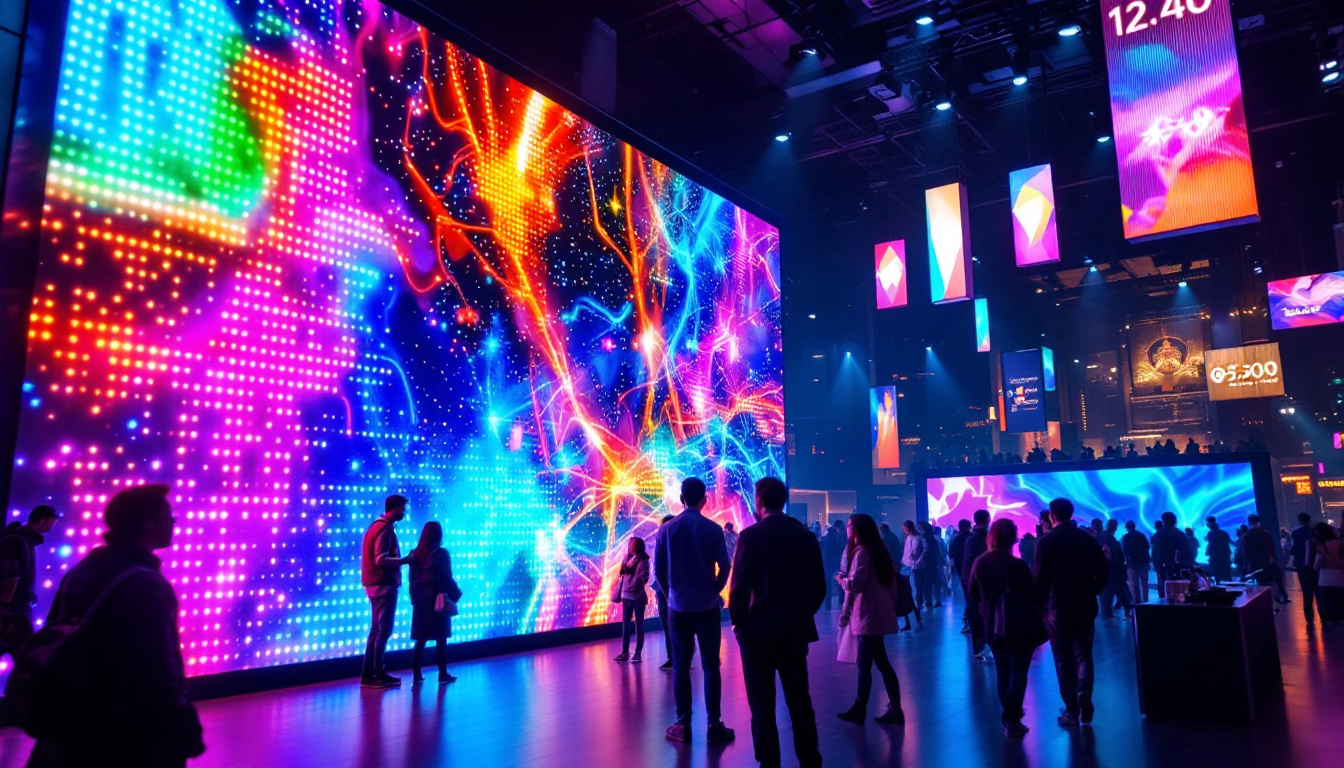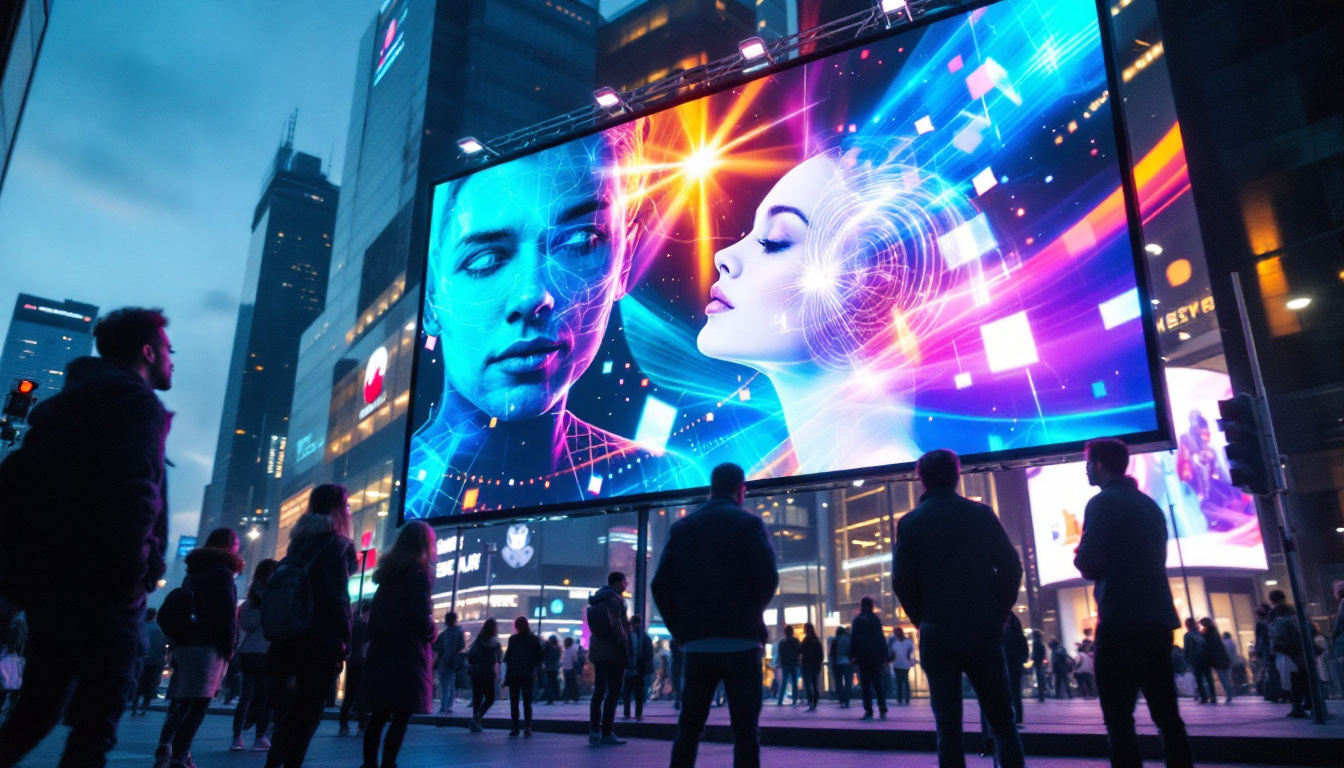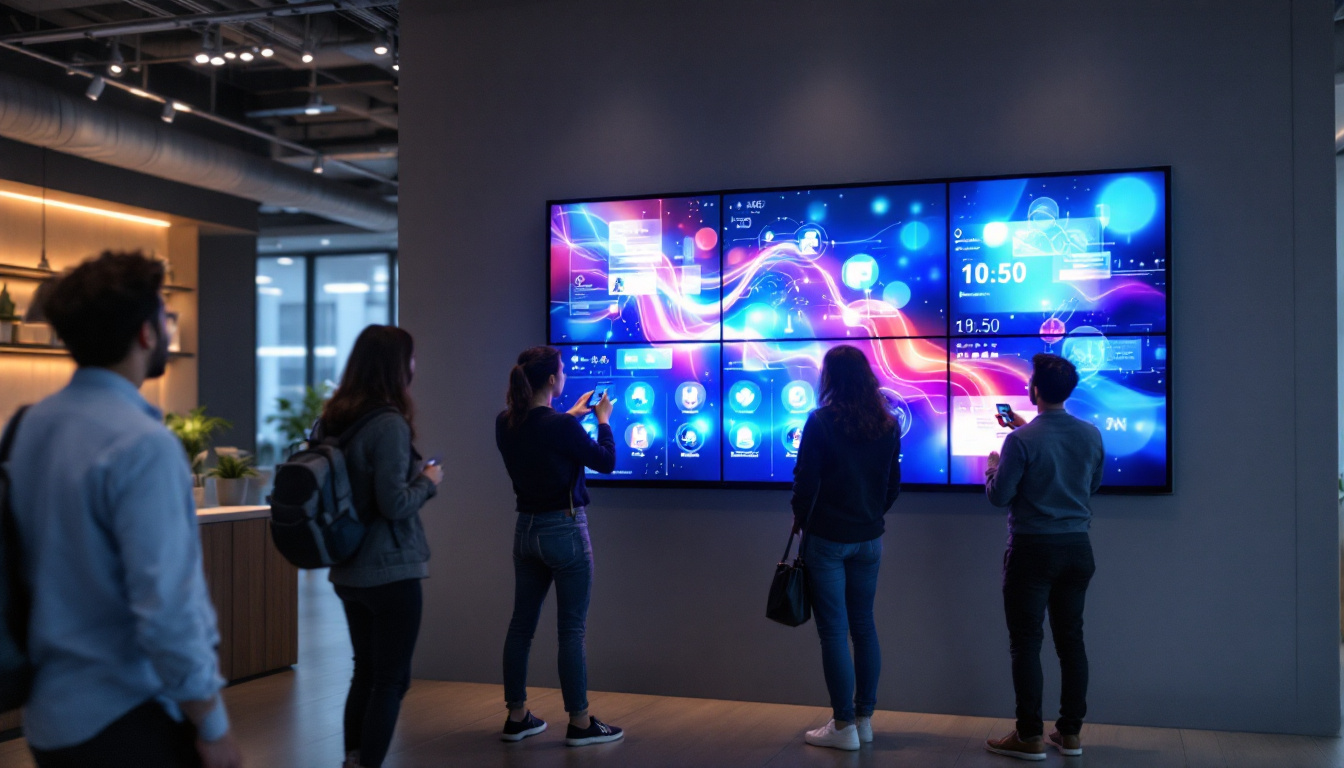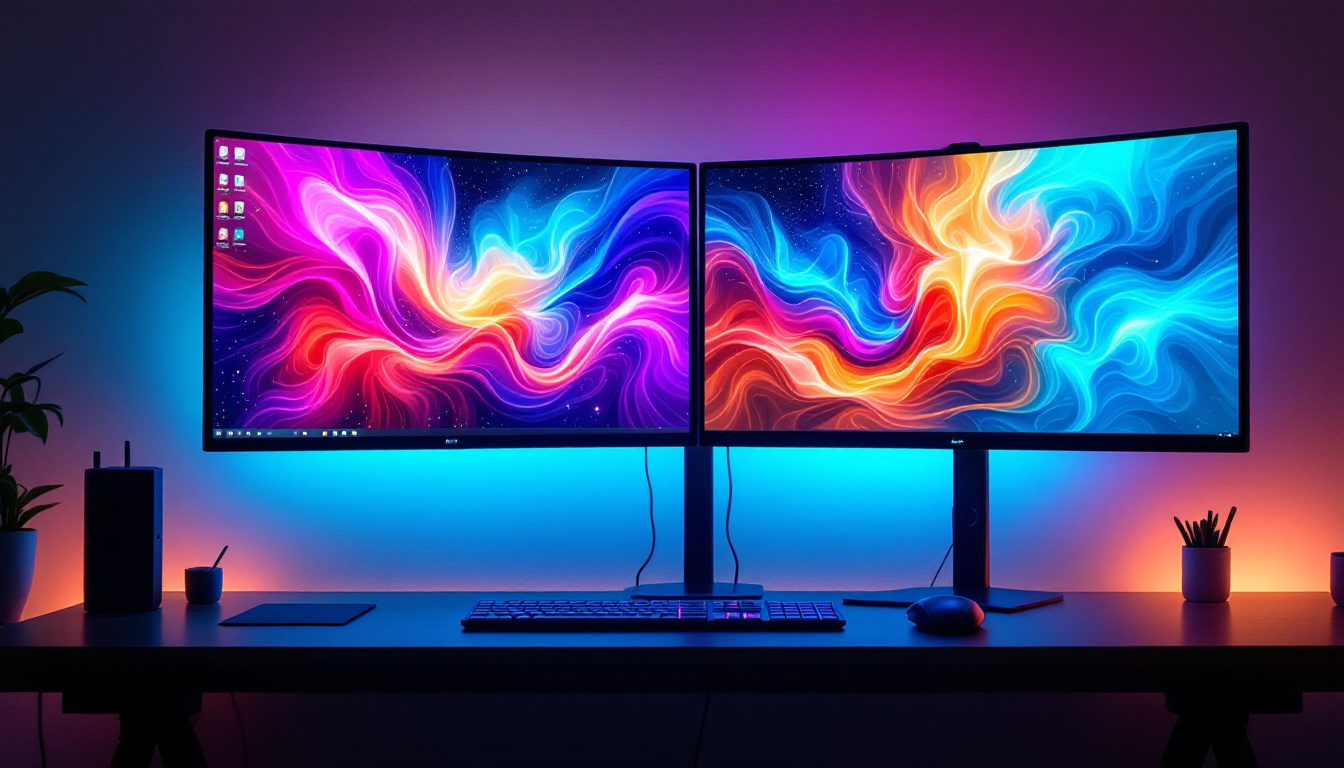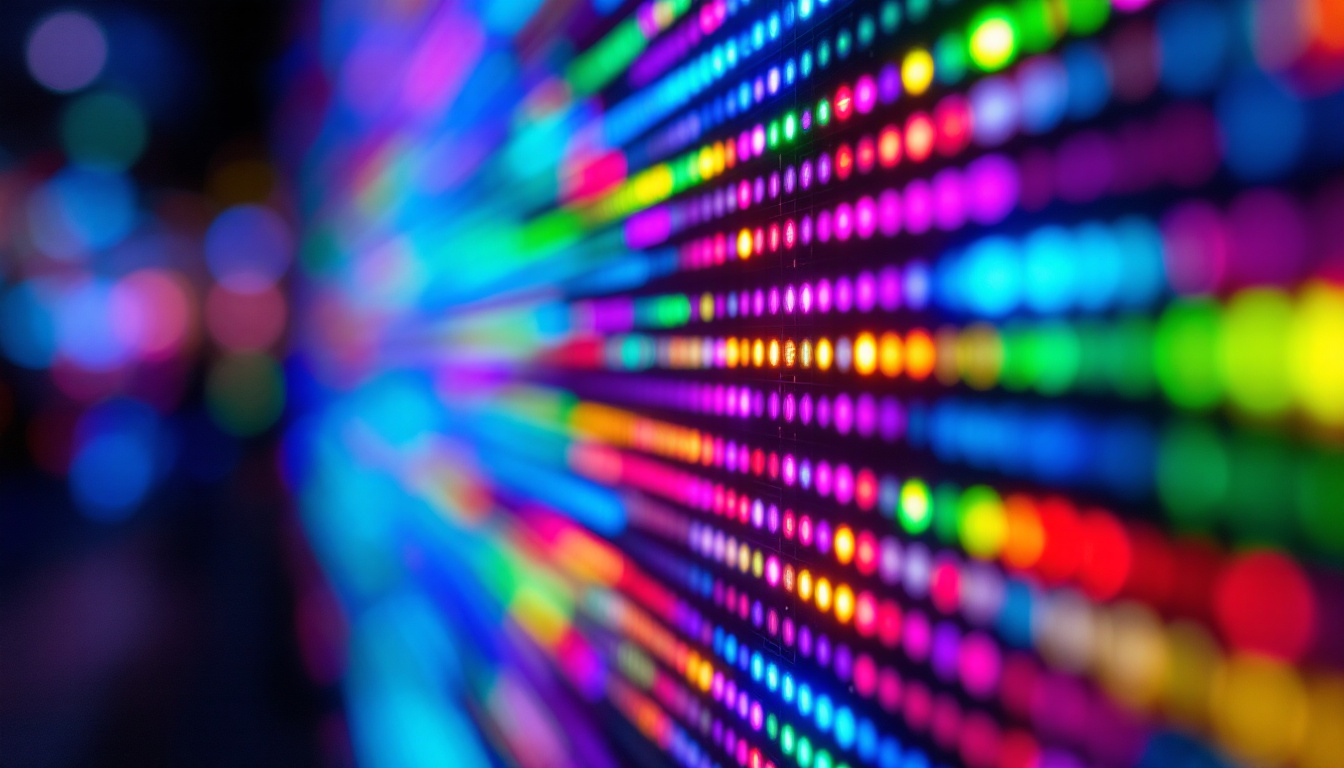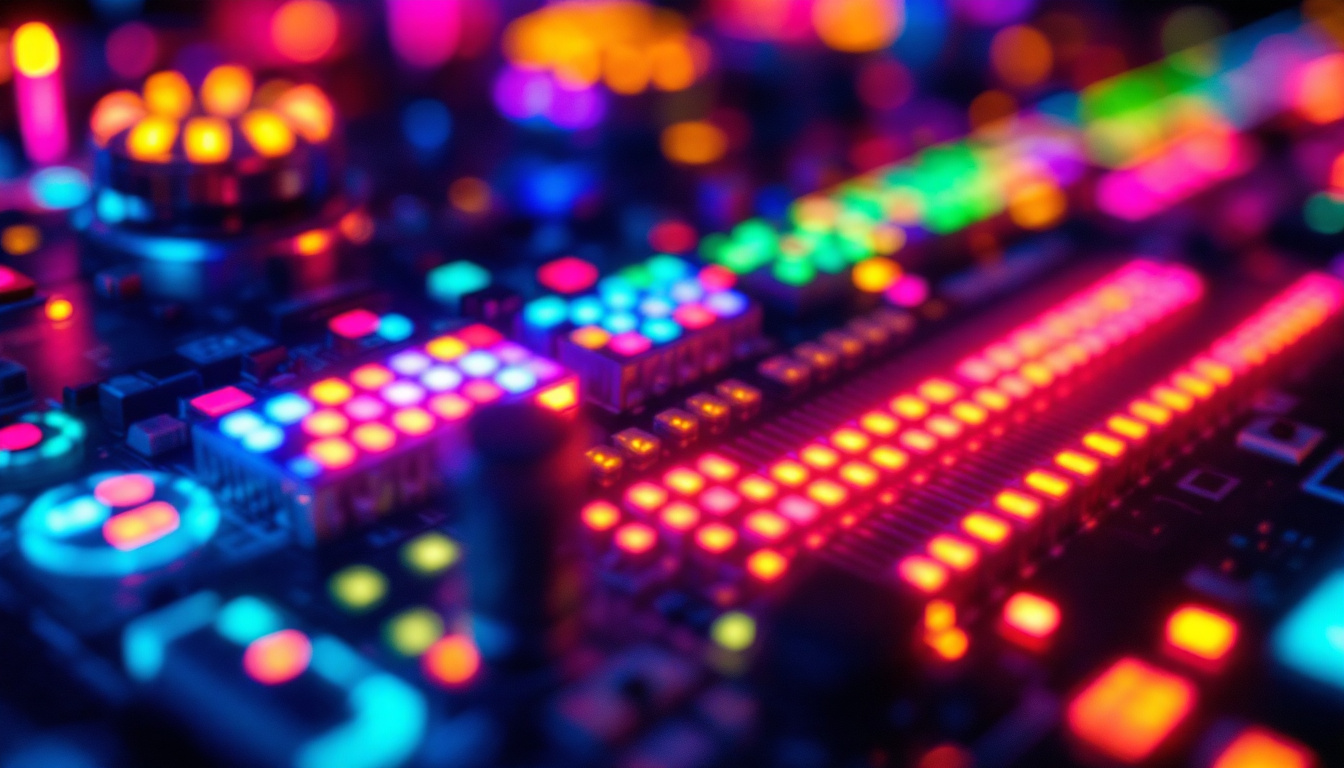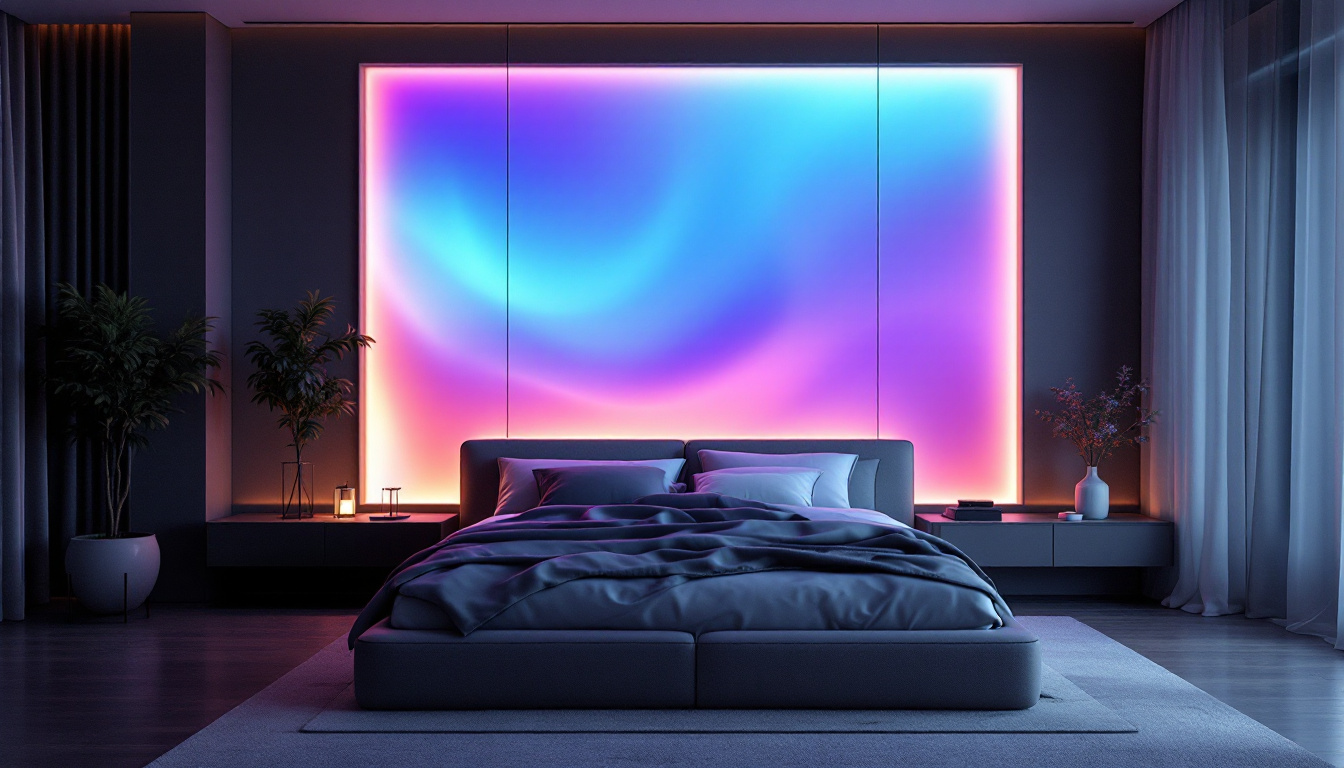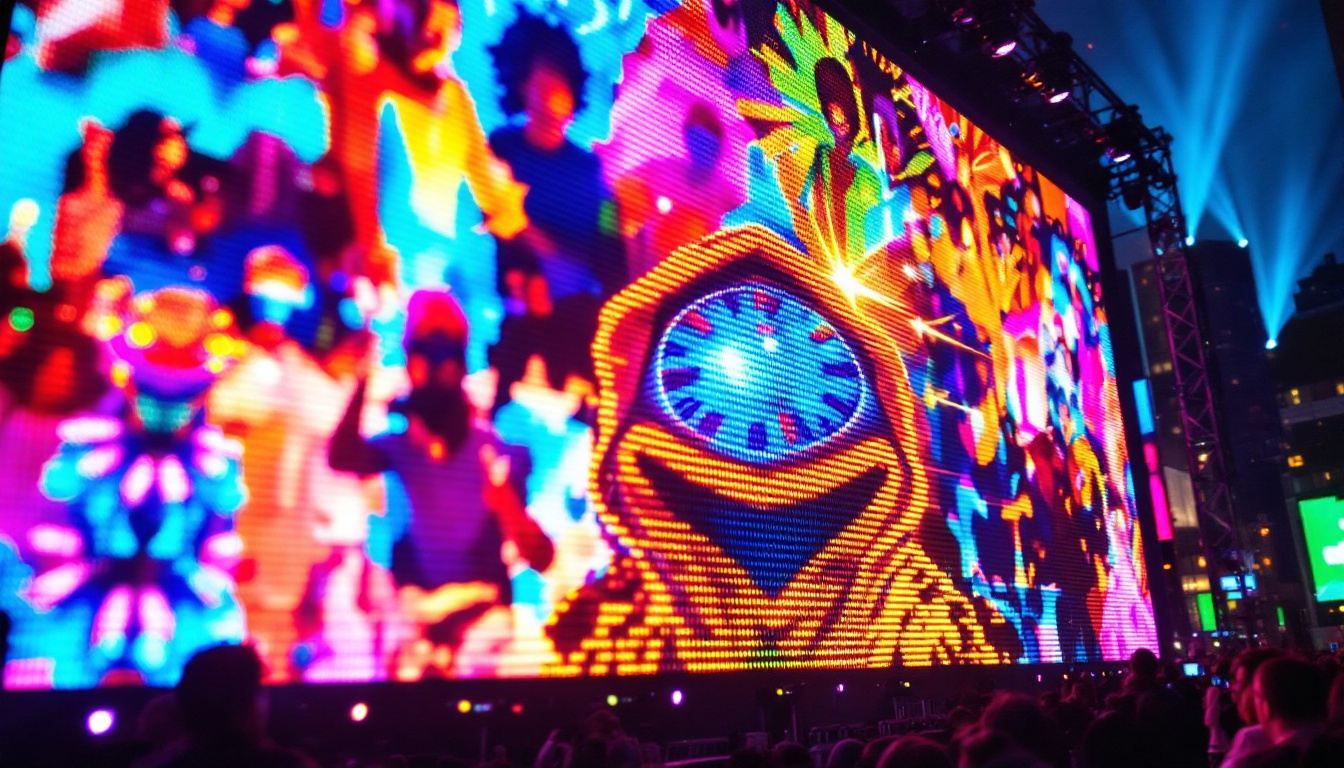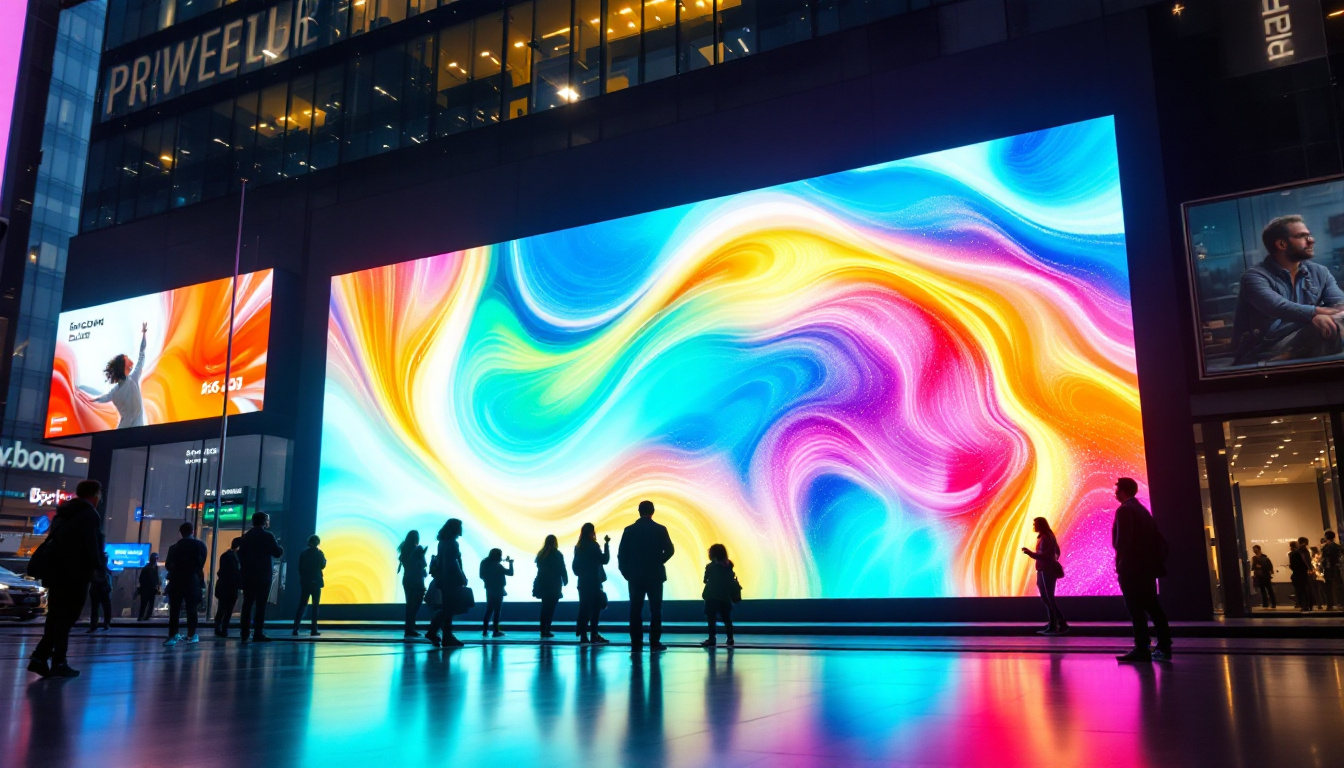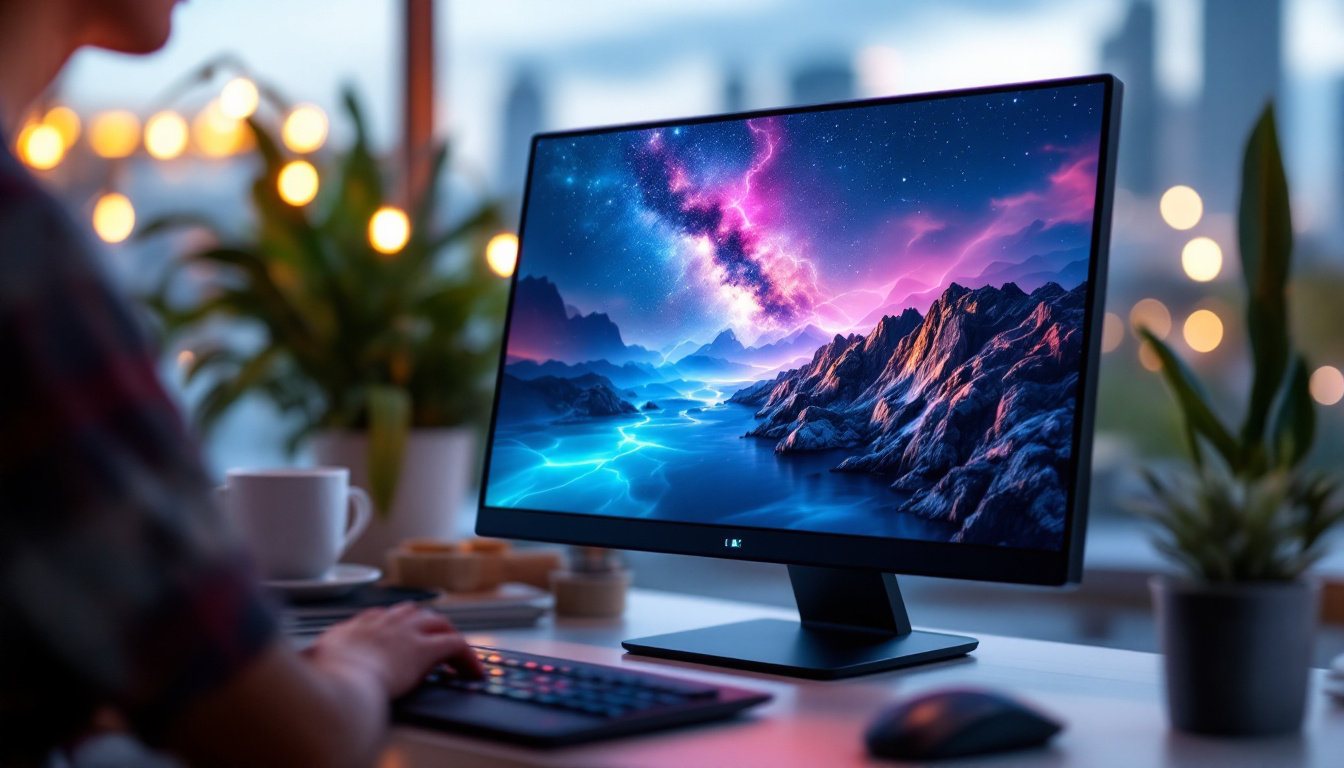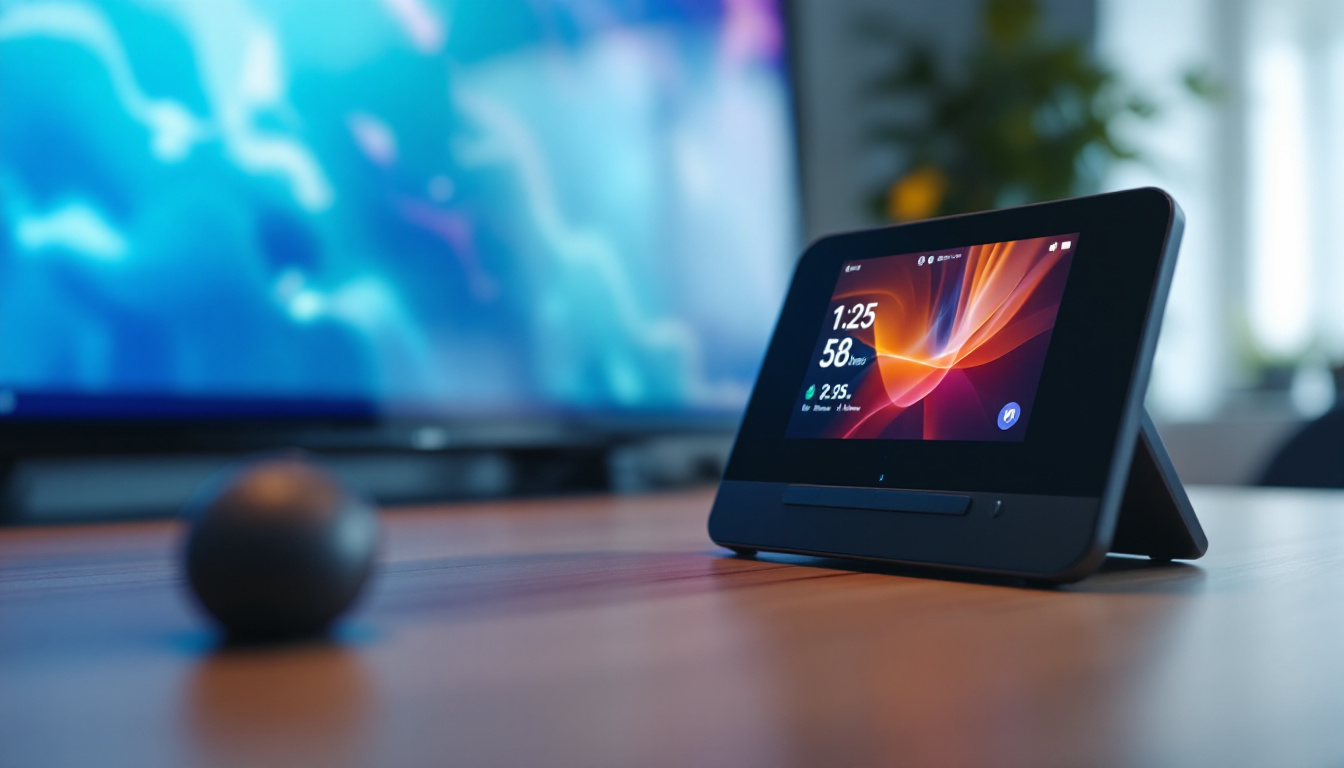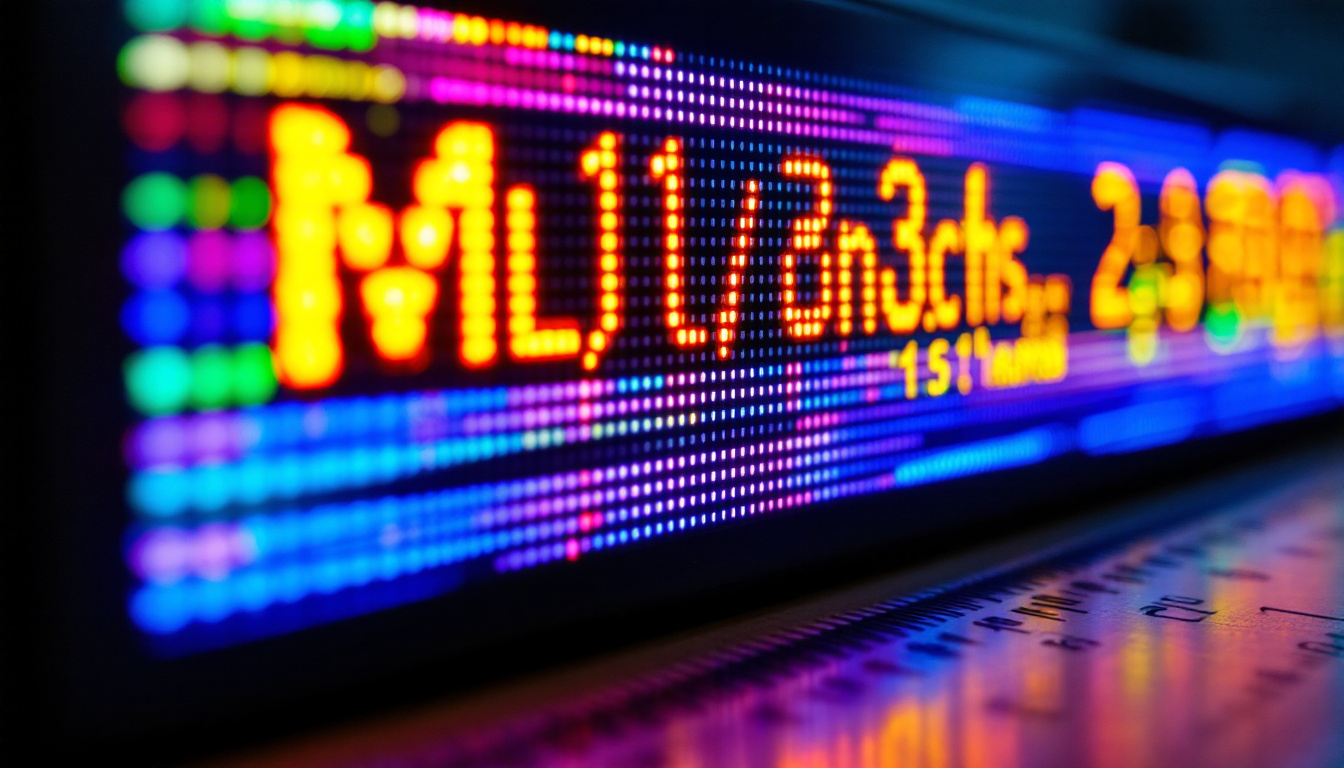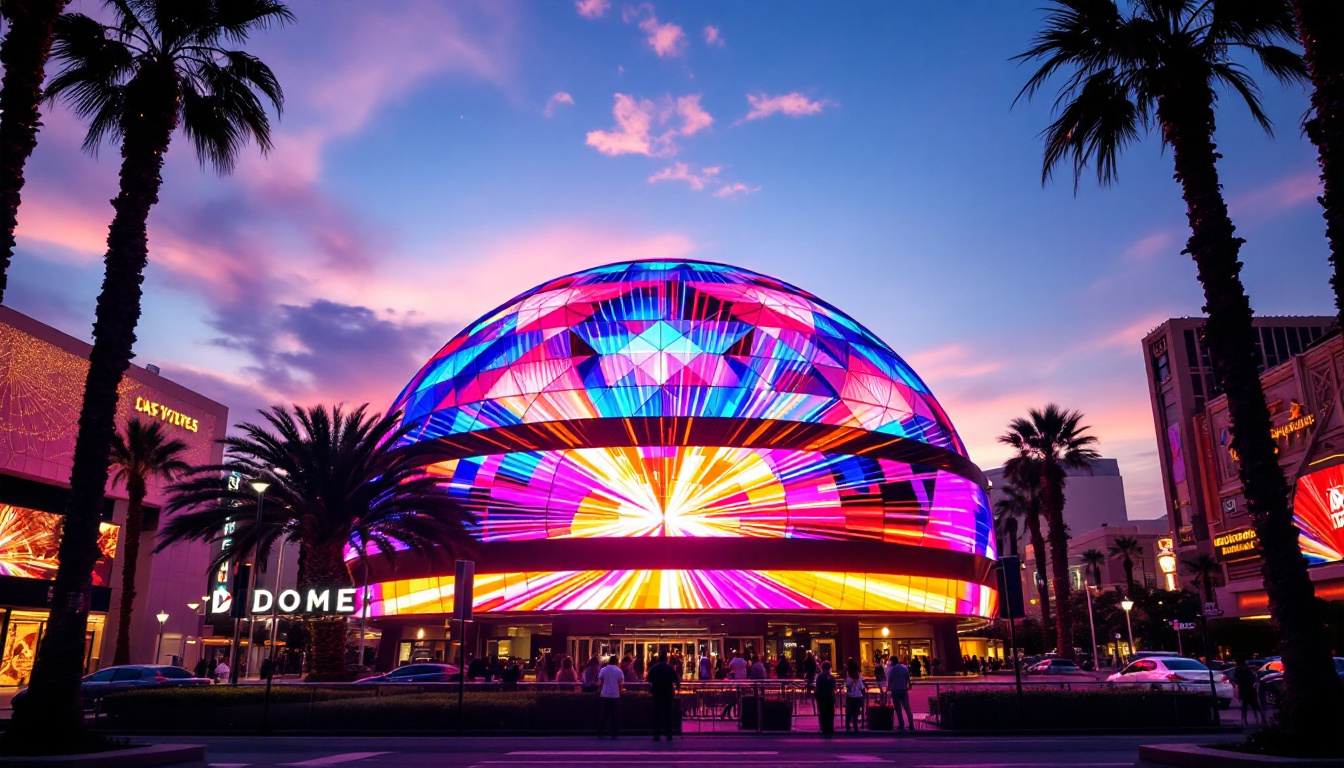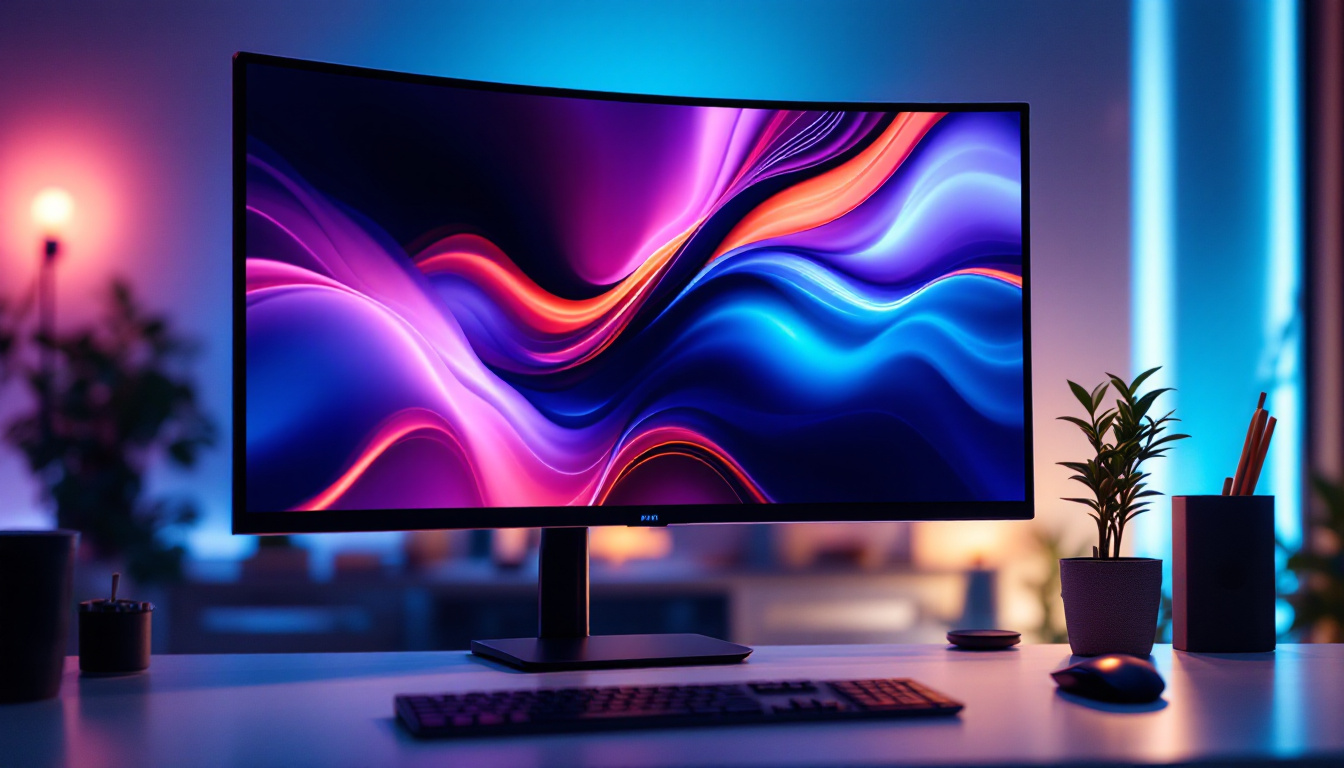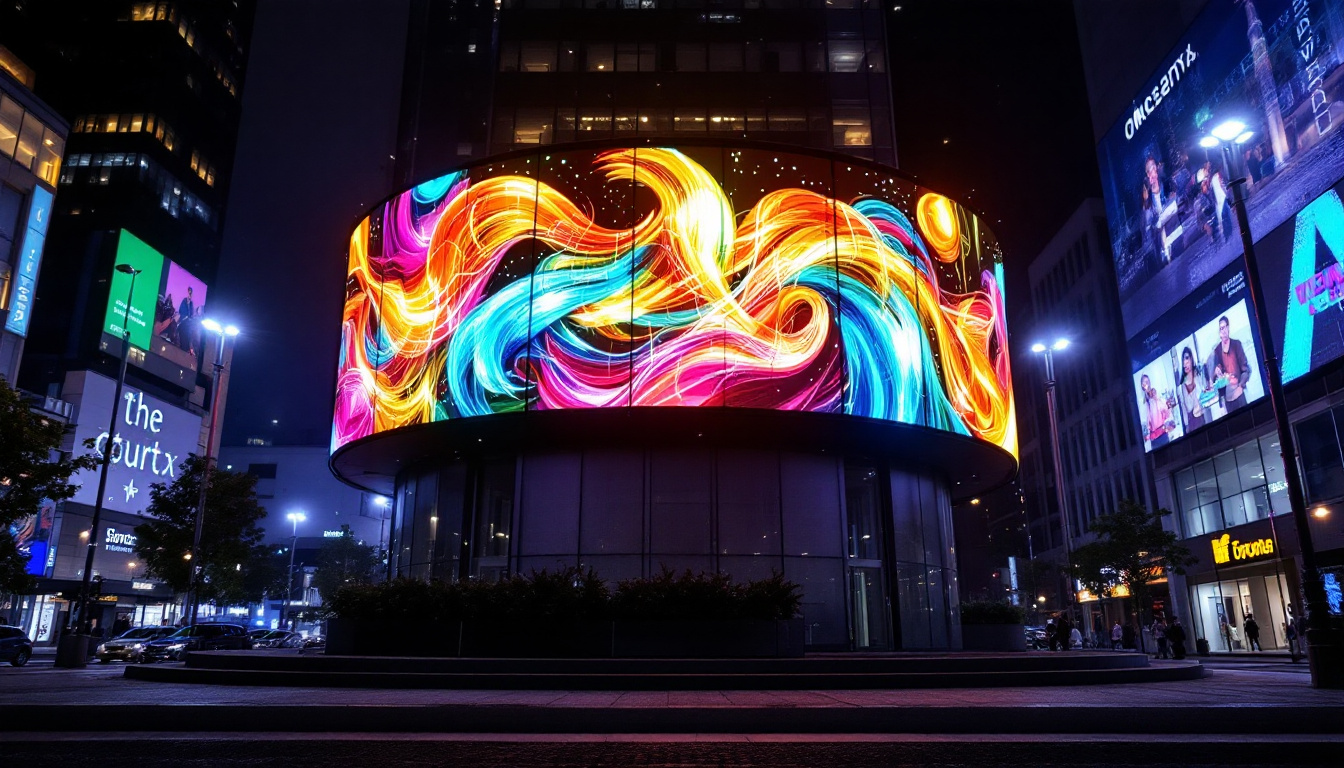In the world of LED displays, pixel pitch is a crucial factor that determines the quality and clarity of the image. One of the most discussed pixel pitches is 1.5 mm. This article delves into what 1.5 mm means in the context of LED displays, its significance, and how it compares to other pixel pitches.
Understanding Pixel Pitch
Pixel pitch refers to the distance from the center of one pixel to the center of an adjacent pixel, measured in millimeters. It is a key specification in LED displays, as it directly influences the display’s resolution and viewing distance. A smaller pixel pitch indicates a higher resolution, allowing for clearer and sharper images, especially when viewed up close.
How Pixel Pitch Affects Display Quality
The pixel pitch significantly impacts the overall quality of the display. For instance, a 1.5 mm pixel pitch means that the pixels are tightly packed, resulting in a high pixel density. This density allows for more detailed images and vibrant colors, making it ideal for applications where visual clarity is paramount, such as in retail environments or high-end presentations.
Conversely, a larger pixel pitch may lead to a decrease in image quality, especially at closer viewing distances. This is because the individual pixels become more visible, which can detract from the overall viewing experience. Therefore, understanding pixel pitch is essential for selecting the right LED display for specific applications. Additionally, the choice of pixel pitch can also influence the cost of the display; smaller pixel pitches generally come with a higher price tag due to the increased manufacturing complexity and technology involved.
Optimal Viewing Distance
The optimal viewing distance for an LED display is closely related to its pixel pitch. For a display with a 1.5 mm pixel pitch, the recommended viewing distance is typically around 1.5 to 2.5 meters. This means that viewers can enjoy the full benefits of the display’s high resolution without noticing the individual pixels.
In contrast, displays with larger pixel pitches, such as 3 mm or 5 mm, are better suited for longer viewing distances. This makes them ideal for outdoor advertising or large venues where viewers are positioned far away from the screen. Furthermore, the environment in which the display is used can also affect the perceived quality. For example, in a brightly lit area, a display with a larger pixel pitch may struggle to maintain visibility and vibrancy compared to a smaller pixel pitch display, which can better handle such conditions due to its higher resolution and pixel density. Thus, considering both pixel pitch and environmental factors is crucial when selecting an LED display for optimal performance.
Applications of 1.5 mm LED Displays
1.5 mm LED displays are increasingly popular across various industries due to their superior image quality and versatility. They are commonly used in settings where high-resolution visuals are critical, such as in corporate environments, retail spaces, and entertainment venues.
Corporate Environments
In corporate settings, 1.5 mm LED displays are often employed for presentations, video conferencing, and digital signage. The clarity and vibrancy of the images enhance communication and engagement, making them a valuable tool for businesses aiming to impress clients and stakeholders.
Moreover, these displays can be integrated into conference rooms and lobbies, providing an eye-catching focal point that showcases the company’s brand and messaging effectively. The ability to customize content in real-time allows companies to adapt their messaging to suit different audiences, whether it’s a corporate meeting, a product launch, or a public event. This flexibility not only improves the effectiveness of communication but also reinforces the company’s image as innovative and forward-thinking.
Retail Spaces
Retail environments benefit significantly from 1.5 mm LED displays, as they can attract customers’ attention with stunning visuals. High-resolution displays are particularly effective for showcasing products, promotions, and advertisements, driving sales and enhancing the shopping experience.
Additionally, the ability to update content easily allows retailers to keep their messaging fresh and relevant, further engaging customers and encouraging repeat visits. Interactive displays can also be integrated, allowing customers to browse products, access promotions, or even engage in social media campaigns directly from the screen. This interactivity not only enhances the customer experience but also provides valuable data on consumer behavior, enabling retailers to refine their marketing strategies.
Entertainment Venues
In the entertainment industry, 1.5 mm LED displays are utilized in concert venues, theaters, and sports arenas. The high pixel density ensures that audiences receive a clear and immersive experience, regardless of their seating position.
From live events to movie screenings, the visual quality provided by these displays enhances the overall atmosphere and enjoyment for attendees, making them a preferred choice for event organizers. Furthermore, these displays can be synchronized with sound systems and lighting to create a cohesive and dynamic experience. For example, during concerts, the visuals can be tailored to match the rhythm and mood of the music, elevating the performance and leaving a lasting impression on the audience. This level of integration not only captivates attendees but also sets a new standard for live entertainment experiences.
Comparing 1.5 mm with Other Pixel Pitches
When considering an LED display, it’s essential to compare different pixel pitches to determine the best fit for specific needs. While 1.5 mm displays offer numerous advantages, other pixel pitches also have their unique benefits.
1.5 mm vs. 2 mm
The difference between a 1.5 mm and a 2 mm pixel pitch may seem minor, but it can have a significant impact on display performance. A 2 mm pixel pitch offers a slightly lower resolution, which may be suitable for applications where viewers are positioned further away.
For instance, a 2 mm display might be more cost-effective for larger venues where high-resolution images are less critical. However, for environments where close viewing is common, such as retail or corporate settings, the superior clarity of a 1.5 mm display is often worth the investment.
1.5 mm vs. 3 mm
As the pixel pitch increases to 3 mm, the differences in resolution become more pronounced. A 3 mm display is generally more affordable and suitable for outdoor applications or large venues where viewers are typically at a greater distance.
However, for indoor applications where detail and color accuracy are paramount, a 1.5 mm pixel pitch is preferable. The choice ultimately depends on the specific use case and viewing conditions.
Factors to Consider When Choosing a 1.5 mm LED Display
Selecting the right LED display involves considering several factors beyond just pixel pitch. Understanding these elements can help ensure that the chosen display meets the intended requirements and delivers optimal performance.
Brightness Levels
Brightness is a critical factor in LED displays, particularly for outdoor applications. A display with a high brightness level ensures that images remain clear and vibrant, even in direct sunlight. For indoor environments, brightness levels can be lower, but it’s still essential to choose a display that provides adequate visibility in various lighting conditions.
1.5 mm LED displays typically offer high brightness levels, making them versatile for both indoor and outdoor use. However, it’s essential to assess the specific brightness requirements based on the intended application.
Color Accuracy
Color accuracy is another vital consideration when selecting an LED display. A display that can reproduce colors faithfully will enhance the overall viewing experience, making visuals more engaging and lifelike.
1.5 mm displays often excel in color reproduction, providing a wide color gamut that allows for vibrant images. This feature is particularly important in applications such as retail and entertainment, where visual appeal is crucial for capturing audience attention.
Refresh Rate
The refresh rate of an LED display refers to how often the image is updated per second. A higher refresh rate results in smoother motion and reduces flickering, which is especially important for video content.
For applications that involve fast-moving visuals, such as sports events or concerts, a high refresh rate is essential. Many 1.5 mm LED displays offer refresh rates that meet or exceed industry standards, ensuring a seamless viewing experience.
Installation and Maintenance of 1.5 mm LED Displays
Proper installation and maintenance are crucial for maximizing the lifespan and performance of LED displays. Understanding the requirements for both can help ensure that the investment in a 1.5 mm display pays off in the long run.
Installation Considerations
Installing a 1.5 mm LED display requires careful planning and consideration of various factors, including location, mounting options, and power supply. The display should be positioned to provide optimal viewing angles and accessibility for maintenance.
Additionally, it’s important to ensure that the display is installed in a location with adequate ventilation to prevent overheating, which can affect performance and longevity. Professional installation services are often recommended to ensure that the display is set up correctly.
Maintenance Practices
Regular maintenance is essential for keeping a 1.5 mm LED display in optimal condition. This includes routine cleaning to remove dust and debris, which can affect image quality. It’s also important to monitor the display for any signs of malfunction, such as dead pixels or color inconsistencies.
Many manufacturers provide guidelines for maintenance, including recommended cleaning products and techniques. Following these guidelines can help extend the life of the display and ensure consistent performance over time.
Conclusion
In summary, a 1.5 mm pixel pitch in LED displays represents a balance of high resolution and versatility, making it an excellent choice for various applications. Whether in corporate environments, retail spaces, or entertainment venues, the clarity and vibrancy of 1.5 mm displays can significantly enhance the viewing experience.
When selecting an LED display, it’s essential to consider factors such as brightness, color accuracy, and refresh rate, along with the specific needs of the intended application. Proper installation and maintenance will further ensure that the investment in a 1.5 mm LED display yields long-lasting benefits.
Ultimately, understanding the nuances of pixel pitch and the capabilities of LED displays can empower businesses and organizations to make informed decisions, leading to improved visual communication and engagement.
Discover LumenMatrix’s Advanced LED Display Solutions
Ready to elevate your visual communication with high-resolution LED displays? LumenMatrix is at the forefront of LED display innovation, offering a diverse range of solutions tailored to your needs. From immersive Indoor LED Wall Displays to dynamic Outdoor LED Wall Displays, and from versatile Vehicle LED Displays to engaging LED Sports Displays, LumenMatrix has the technology to transform your space. Experience the difference in clarity and impact with our state-of-the-art LED display modules. Check out LumenMatrix LED Display Solutions today and start creating captivating visual experiences that resonate with your audience.


